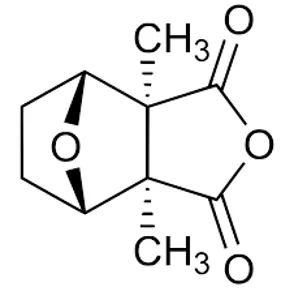 Molecular structure of cantharidin
Manuel Almagro Rivas, CC BY-SA 4.0, via Wikimedia Commons
Molecular structure of cantharidin
Manuel Almagro Rivas, CC BY-SA 4.0, via Wikimedia Commons
The beetles contain an intensely toxic chemical called cantharidin. Male beetles make this potent toxin to pass to female beetles during copulation. The females coat their eggs with it as protection from predators which find the coating extremely distasteful.
Placed on human skin, cantharidin rapidly produces painful blisters. Ten milligrams, if eaten, can be fatal. Cantharidin, however, can be used as an aphrodisiac. A considerably smaller amount is eaten and eliminated in the urine. When excreted, cantharidin stimulates the urethra running through the penis. Similar stimulatory effects can happen in women. Too little cantharidin and there is no aphrodisiac effect: too much and you might die in agony (not one to try at home!). Cantharidin’s blistering capacity still has a minor medical use to remove warts on the skin.
So there we have the link between our museum, God and the Marquis de Sade: small but fascinating beetles!